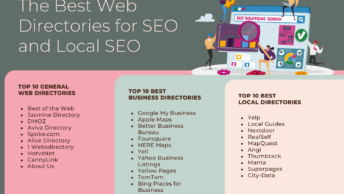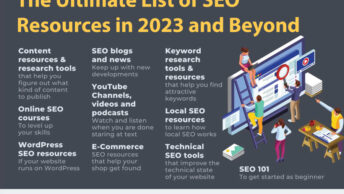SEO (Search Engine Optimization) has been a consuming interest for many Internet marketers for the past decade. However if Forbes can be asking the question, Is SEO Dead, then it may be time to reconsider where efforts are best applied.
For long-Time SEO Jill Whalen the answer is clear. She is moving on and praises Google for rewarding content more. As she wrote:
Finally, however, Google put their money where their mouth was with their Panda and Penguin updates. At last the only real way to do SEO was what I had been espousing all along. And it’s a beautiful thing! Today’s SEO blogs and conferences are bursting with SEO consultants talking about how, when you create amazing websites and content for your users, the search engines will follow.
Not everyone agrees on this simple view of the world so let us explore in greater depth what SEO now involves and how this may interact with what is happening in social media.
SEO Has Become Much More Challenging
If you needed any confirmation that whatever SEO may now be, it is more challenging, check the views of Avinash Kaushik, the Digital Marketing Evangelist for Google. He recently wrote an article, Search: Not Provided: What Remains, Keyword Data Options, the Future. Google no longer provides information on what keywords searchers may have been using to arrive at web pages through Google Search. His very detailed suggestions on what SEOs can still do are very complex and will provide only very partial answers. Here is his final summary on where we stand:
There is no doubt that secure search, and the delightful result not provided, creates a tough challenge for all Marketers and Analysts. … I’m also cautiously optimistic that there will be future solutions that we have not yet imagined that will address the void of keyword level performance analysis. And I know for a fact that many of us will embrace controlled experimentation.
In other words, you will no longer be able to use analytics on visitor traffic to predict how different web pages may perform in Google Search. All you can do is A/B testing and check the visitor traffic that results.
That does not mean there is nothing that SEO can do. You must still ensure that you have not perhaps inadvertently put blockages in the way search engines may crawl and index web page content. Optimization may no longer be possible but at least you can avoid any negative penalties.
Google Search Has Changed Dramatically
While SEO may be getting more challenging, the results to be achieved may also be much reduced from what could be gained in prior years. Never forget that Google is largely a paid advertising company. They may well try to ensure that most of the screen real estate they create is displaying their clients’ advertising rather than free links to their clients’ competitors. This is a very clear trend if you examine their typical keyword search reports over the years.
This is even more clear after their latest Hummingbird search algorithm update which aims to provide answers to questions rather than relevant web pages to keyword queries. You can now check concepts such as, compare butter versus margarine. The resulting web page shows only Google links and no organic search results are above the fold. This inevitably means that there will be very many fewer visitors to the companies who have only organic search results appearing lower on the web page.
This does not mean that companies can forget about Google since even reduced traffic still represents significant numbers of web site visitors. Google is well aware of this and uses strong pressure to encourage website owners to work through Google Plus by having a company page or pages. This may possibly ensure greater visibility in Google Search results but at the same time gives Google much more data by which they can present results to queries without transfering the users to the company pages. This is a win/win situation for Google and a likely lose/lose situation for website owners.
This is the situation that Chris Abraham discusses in his article,Spending more time on SEO than adding value to Google?. As he suggests:
Most People Will Find Your Site Through Deep Search
Potentially, Google will pop people anywhere into your site but always in the right place to find what they’re looking for. What’s more, if you make things easy enough for Google to truly grok (to understand intuitively or by empathy; to establish rapport with), you may very well allow Siri and Google Now to interpret the content on your behalf without the visitors ever needing to actually get to your site.
Given this shrinking traffic volume from Google, companies must look for other channels to get their messages to their clients and prospects. Thankfully social media such as Facebook and Twitter are growing strongly and provide effective ways of making contact with potential prospects and encouraging them to visit your online properties.
Search Engines Rely On Social Signals
This heightened focus on social media may have major benefits in terms of increased visitor traffic. In addition as Danny Sullivan has pointed out, search engines are now using social signals and this will affect how your web pages rank. For example, your stature on Twitter could help influence how a page ranks in web search. So efforts spent on gaining visibility in social media have a two-fold benefit, directly with visitors and indirectly through the search engine benefit.
James Parsons has set out which social signals matter for SEO.
Social signals are organically-grown, digital word-of-mouth that comes by way of likes, tweets, pins, shares, reviews and backlinks. These actions prove that users are engaging in your content. Any online action that shows a user engaging in your content is a social signal. While there are tons of avenues to create such signals, the five most important sites for SEO marketing are Facebook, Twitter, Google +, Youtube and Pinterest.
Working With Social Media Takes Time
The downside on working with social media is that this cannot be automated to be effective. Real individuals must spend the time to connect and interact with other real individuals when both are linked via the particular social medium. It is therefore essential to consider the likely effect of particular social signals and prioritise where the effort should be put. In some cases, the priority choice is easy.
Where Businesses Thrive On Images, Social Media Is An Obvious Choice
Individuals can react to an image in milliseconds. Communicating via images is thus instantaneous and not slowed down as someone tries to read through the words of non-pictorial connections. Perhaps not surprisingly social media that deal with images have seen explosive growth. Businesses that can use images in their marketing are thus well-advised to use Pinterest, Instagram or Tumblr. If appropriate content and hashtags are associated with these images, then they may rank well in search engine image searches.
Five Reasons Why All Businesses Should Put Effort Into Social Media
Using image-based social media may be a no-brainer but all businesses can benefit from appropriate involvement with social media. Here in summary are five reasons why more effort should go on social media that affect all businesses:
- Google now gives less screen real estate to organic search (SEO) results
- Mobile users represent a much greater share of online activity and SEO is much more difficult with such small screens
- Local search is more mobile based and relies more on user signals like reviews that can be found on social media
- Social media sites highlight sharing/liking by others
- As a result, social media sites often give higher conversions to sales from their visitors.
A final note is that the trend to more activity via mobile devices is strong and rapid. Social media as a result will become even more important in the coming months and years.





